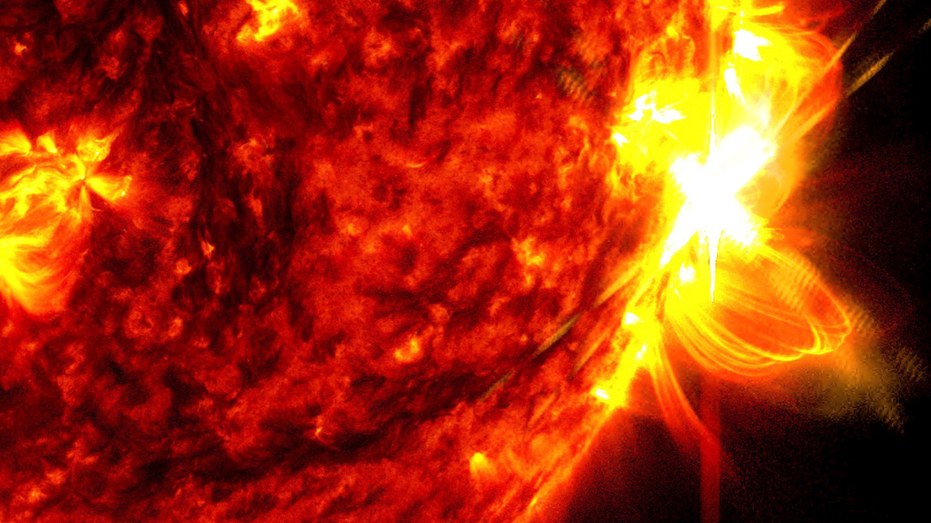A severe solar storm that reached Earth on Thursday could stress power grids even more as the U.S. reels from back-to-back major hurricanes, according to space weather forecasters.
The National Oceanic and Atmospheric Administration (NOAA) said Thursday that a Coronal Mass Ejection (CME) blasted from the Sun reached Earth at about 11 a.m.
The Space Weather Prediction Center issued multiple warnings and alerts for geomagnetic storm conditions, and by Thursday, the Earth was experiencing G4, or severe, conditions.
NOAA said a severe geomagnetic storm is a major disturbance in Earth’s magnetic field. The storms often have varying intensity between lower levels and severe storm conditions throughout the course of the event.
GEOMAGNETIC STORM EXPECTED TO HIT EARTH FOLLOWING AUTUMNAL EQUINOX

Geomagnetic storms could impact the power grid, satellites and GPS technology.
“Storm conditions are anticipated to occur overnight as CME progression continues,” NOAA said on its website. “Variations due to CME passage will result in periods of weakening and escalation in geomagnetic storm levels.”
Earlier this week, NOAA issued a severe geomagnetic storm watch for Thursday into Friday after an outburst from the sun was detected. A geomagnetic storm has the potential of temporarily disrupting power and radio signals.
In preparation for the storm, NOAA notified power plant operators and those controlling spacecraft orbiting the planet to take precautions.
GEOMAGNETIC STORM HITS EARTH CREATING NORTHERN LIGHTS, DISRUPTING RADIO COMMUNICATIONS

NOAA also notified the Federal Emergency Management Agency (FEMA) about possible power disruptions as it deals with the devastation left behind from Hurricane Helene, and now Hurricane Milton, which made landfall near Siesta Key, Florida, on Wednesday night as a Category 3 storm, packing winds up to 120 mph.
Space weather forecasters do not expect the latest solar storm to surpass the one that slammed Earth in May, which was the strongest in more than 20 years.
Florida is far enough south to avoid any power disruptions from the solar surge unless it gets a lot bigger, scientist Rob Steenburgh of NOAA’s Space Weather Prediction Center told The Associated Press on Wednesday.
NORTHERN LIGHTS MAY BE SEEN ACROSS SOME PORTIONS OF US THIS WEEK AFTER ‘STRONG SOLAR ACTIVITY’

“That adds a little bit more to the comfort level,” Steenburgh said. “Why we’re here is to let them know so that they can prepare.”
Experts are more concerned about potential effects on the power grids in areas slammed by Hurricane Helene two weeks ago, NOAA space weather forecaster Shawn Dahl said.
The storm also may trigger northern lights as far south in the U.S. as the lower Midwest and Northern California, though exact locations and times are uncertain, according to NOAA. Sky gazers are reminded to point their smartphones upward for photos; the devices can often capture auroras that human eyes cannot.
CLICK HERE TO GET THE FOX NEWS APP
May’s solar storm produced dazzling auroras across the Northern Hemisphere and resulted in no major disruptions.
The sun is near the peak of its current 11-year cycle, sparking all the recent solar activity.
The Associated Press contributed to this report.
Daily Science News on Fox News
Read the full article .


